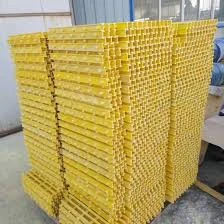
-
 Afrikaans
Afrikaans -
 Albanian
Albanian -
 Amharic
Amharic -
 Arabic
Arabic -
 Armenian
Armenian -
 Azerbaijani
Azerbaijani -
 Basque
Basque -
 Belarusian
Belarusian -
 Bengali
Bengali -
 Bosnian
Bosnian -
 Bulgarian
Bulgarian -
 Catalan
Catalan -
 Cebuano
Cebuano -
 China
China -
 China (Taiwan)
China (Taiwan) -
 Corsican
Corsican -
 Croatian
Croatian -
 Czech
Czech -
 Danish
Danish -
 Dutch
Dutch -
 English
English -
 Esperanto
Esperanto -
 Estonian
Estonian -
 Finnish
Finnish -
 French
French -
 Frisian
Frisian -
 Galician
Galician -
 Georgian
Georgian -
 German
German -
 Greek
Greek -
 Gujarati
Gujarati -
 Haitian Creole
Haitian Creole -
 hausa
hausa -
 hawaiian
hawaiian -
 Hebrew
Hebrew -
 Hindi
Hindi -
 Miao
Miao -
 Hungarian
Hungarian -
 Icelandic
Icelandic -
 igbo
igbo -
 Indonesian
Indonesian -
 irish
irish -
 Italian
Italian -
 Japanese
Japanese -
 Javanese
Javanese -
 Kannada
Kannada -
 kazakh
kazakh -
 Khmer
Khmer -
 Rwandese
Rwandese -
 Korean
Korean -
 Kurdish
Kurdish -
 Kyrgyz
Kyrgyz -
 Lao
Lao -
 Latin
Latin -
 Latvian
Latvian -
 Lithuanian
Lithuanian -
 Luxembourgish
Luxembourgish -
 Macedonian
Macedonian -
 Malgashi
Malgashi -
 Malay
Malay -
 Malayalam
Malayalam -
 Maltese
Maltese -
 Maori
Maori -
 Marathi
Marathi -
 Mongolian
Mongolian -
 Myanmar
Myanmar -
 Nepali
Nepali -
 Norwegian
Norwegian -
 Norwegian
Norwegian -
 Occitan
Occitan -
 Pashto
Pashto -
 Persian
Persian -
 Polish
Polish -
 Portuguese
Portuguese -
 Punjabi
Punjabi -
 Romanian
Romanian -
 Russian
Russian -
 Samoan
Samoan -
 Scottish Gaelic
Scottish Gaelic -
 Serbian
Serbian -
 Sesotho
Sesotho -
 Shona
Shona -
 Sindhi
Sindhi -
 Sinhala
Sinhala -
 Slovak
Slovak -
 Slovenian
Slovenian -
 Somali
Somali -
 Spanish
Spanish -
 Sundanese
Sundanese -
 Swahili
Swahili -
 Swedish
Swedish -
 Tagalog
Tagalog -
 Tajik
Tajik -
 Tamil
Tamil -
 Tatar
Tatar -
 Telugu
Telugu -
 Thai
Thai -
 Turkish
Turkish -
 Turkmen
Turkmen -
 Ukrainian
Ukrainian -
 Urdu
Urdu -
 Uighur
Uighur -
 Uzbek
Uzbek -
 Vietnamese
Vietnamese -
 Welsh
Welsh -
 Bantu
Bantu -
 Yiddish
Yiddish -
 Yoruba
Yoruba -
 Zulu
Zulu
fiberglass clarifier system
Fiberglass Clarifier System An Efficient Solution for Water Treatment
In today's world, the demand for clean and safe water continues to rise, making effective water treatment systems more important than ever. One innovative solution that has gained popularity in the water treatment industry is the fiberglass clarifier system. This advanced technology offers numerous advantages over traditional systems, making it an attractive option for various applications, including municipal water treatment plants, industrial processes, and wastewater management.
A fiberglass clarifier system primarily functions to remove suspended solids and impurities from water through a process known as sedimentation. During sedimentation, the water is allowed to flow slowly through the clarifier, enabling heavier particles to settle at the bottom and create a sludge layer. The clear water then overflows from the top, ready for further treatment or distribution. The intricate design of fiberglass clarifiers ensures that they operate efficiently, providing high clarity in treated water.
One of the most significant advantages of fiberglass clarifiers is their lightweight and durable construction. Fiberglass is a composite material composed of glass fibers and resin, which makes it resistant to corrosion, chemicals, and UV radiation. Unlike traditional concrete or steel clarifiers, fiberglass systems are less prone to deterioration over time, leading to lower maintenance costs and extended lifespans. This durability is particularly beneficial in environments where chemicals are used or in regions with harsh weather conditions.
Moreover, fiberglass clarifier systems are highly adaptable and customizable. They can be designed to fit any specific requirements, including varying capacities and dimensions, making them suitable for various water treatment applications. Whether for a small industrial facility or a large municipal plant, fiberglass clarifiers can be engineered to optimize performance and efficiency.
fiberglass clarifier system

Another important aspect of fiberglass clarifiers is their ease of installation. The lightweight nature of fiberglass allows for straightforward transportation and installation, reducing the time and labor costs associated with setup. In addition, many manufacturers provide pre-fabricated components that further simplify the installation process, allowing facilities to implement their water treatment systems quickly.
Environmental considerations also enhance the appeal of fiberglass clarifier systems. As they are designed to reduce energy consumption and operational costs, these systems contribute to more sustainable water management practices. Additionally, the reduction of sludge production in the clarifier process minimizes the environmental impact associated with waste disposal. By employing a fiberglass clarifier system, facilities can play a significant role in preserving water resources and protecting the environment.
Furthermore, the integration of advanced technologies, such as automated monitoring and control systems, can improve the efficiency and reliability of fiberglass clarifiers. These technologies allow for real-time data collection and analysis, enabling operators to optimize the clarifier's performance continuously. By leveraging data-driven insights, facilities can ensure that their water treatment processes meet regulatory standards and provide high-quality effluent.
In conclusion, fiberglass clarifier systems present an efficient and effective solution for water treatment needs. Their lightweight and corrosion-resistant construction, adaptability, ease of installation, and environmental benefits make them a preferred choice in the industry. As the global demand for clean water continues to grow, adopting innovative technologies like fiberglass clarifiers is essential for ensuring a sustainable future. By choosing advanced water treatment solutions, we can help safeguard our most precious resource and contribute to cleaner, healthier environments.









